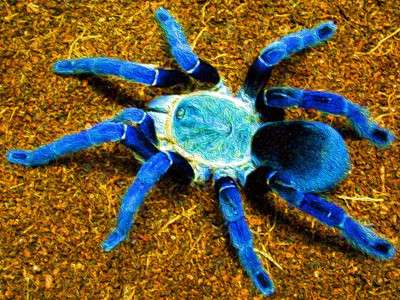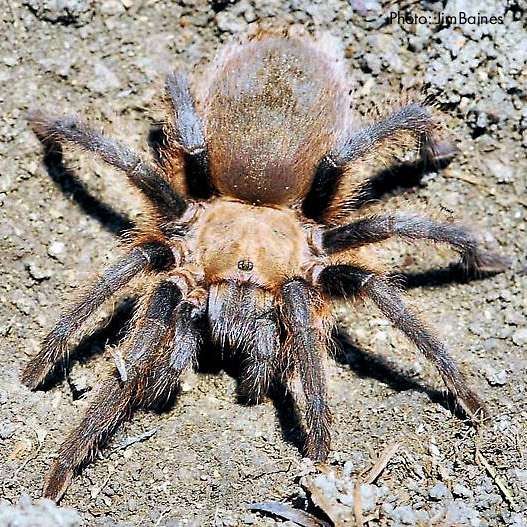
The cobalt blue tarantula, scientific name Cyriopagopus lividus, is a species of spider belonging to the Theraphosidae family that is indigenous to Thailand and Myanmar. Initially, it was referred to as Haplopelma lividum.
Habitat
A terrestrial species that dwells in ground burrows is the cobalt blue tarantula. They normally construct these silken tunnels, and they will spend the majority of their time there, leaving only to go on food hunts.
Despite having a different habitat, they share a large portion of their territory with animals including the Blood Python, Asian Vine Snake, and Dragon Snake.
Geographic Distribution
The South-East Asian tropical rainforests are home to Cyriopagopus lividus. Typically, find them in places like Thailand, Myanmar, Malaysia, and Singapore.
Appearance
- A medium-sized tarantula, the cobalt blue tarantula has legs that are typically around 5 inches long.
- Its iridescent blue legs, which give this species its popular name, are its most remarkable characteristic.
- The spider’s body and abdomen are often a dark brown or black tint. The legs similarly appear dark until they are illuminated, at which point they take on a vivid blue iridescence.
- Spiderlings typically have a duller appearance than adults and tend to be greyish blue in color.

Diet
Any prey that approaches the edge of the cobalt blue tarantula’s den will be picked up and dragged back into the depths to be consumed at the cobalt blue’s convenience.
Make sure provide cobalt blue tarantula food that is the right size. Feeder insects come in a variety of varieties for blue tarantula meals. Crickets and cockroaches are two options, but to ensure optimum nourishment, make sure your feeders are gut-loaded. Dubia roaches are an excellent choice for cobalt blue tarantulas.
Pet
Despite being a quick and protective spider with strong venom, the cobalt blue tarantula is a staple in the pet industry. This species’ bites can cause excruciating muscle pain and inflammation.
Housing
Making an appropriate home is the first step in providing good cobalt blue tarantula care. Simple housing for the cobalt blue spider involves providing a lot of substrate for it to dig in. 8 inches of moist substrate is sufficient for adult specimens, however deeper substrate is generally preferable. Do not worry about the cobalt blue tarantula having too much to dig through; in the natural, they can be discovered several feet below the surface. If you keep this species in a 10- or 20-gallon aquarium-sized acrylic or glass enclosure, you may observe the burrows and webbing that could form if they decide to dig along the sides. For your tarantula to dig in, a mixture of peat moss, coco fibre, or soil (free of chemicals and additives) will be suitable.
For this species, the ideal temperature range is between 78 and 84 degrees Fahrenheit, with a relative humidity between 70 and 80 percent. To reach these values, the substrate can be moistened twice a week. If more heat is required, a heat mat on the side of the enclosure will be effective. However, it’s important to keep an eye on temperatures with a thermostat and to always leave room for a cool side where your tarantula can hide if necessary.
Behavior
When threatened, the cobalt blue tarantula is renowned for being extremely defensive and for biting easily. The cobalt blue has relatively potent venom for an Old World species, and its bite is very painful, with some victims experiencing muscle spasms. Handling the cobalt blue tarantula is not advised because they are extremely quick and swift outside of their burrows. Hair flicking is not an option in cobalt blue tarantulas because they lack the urticating’s hairs that New World species have.
Table





